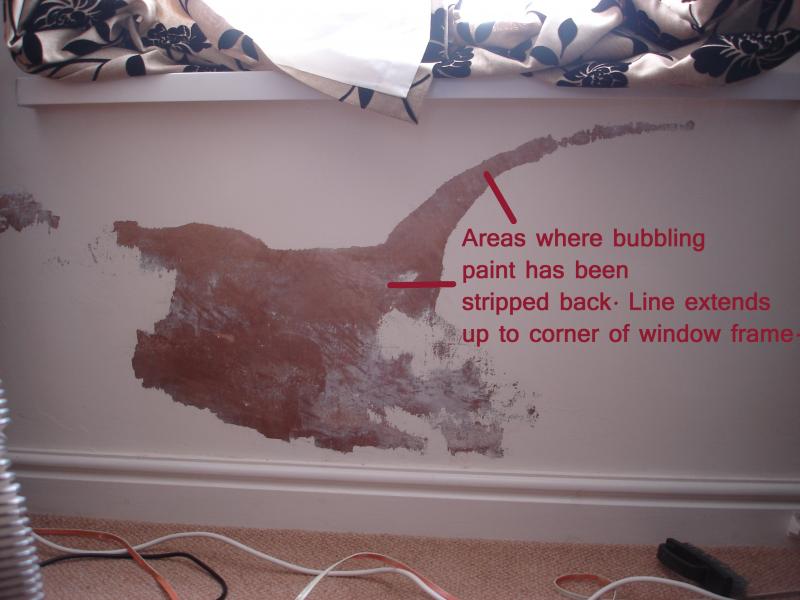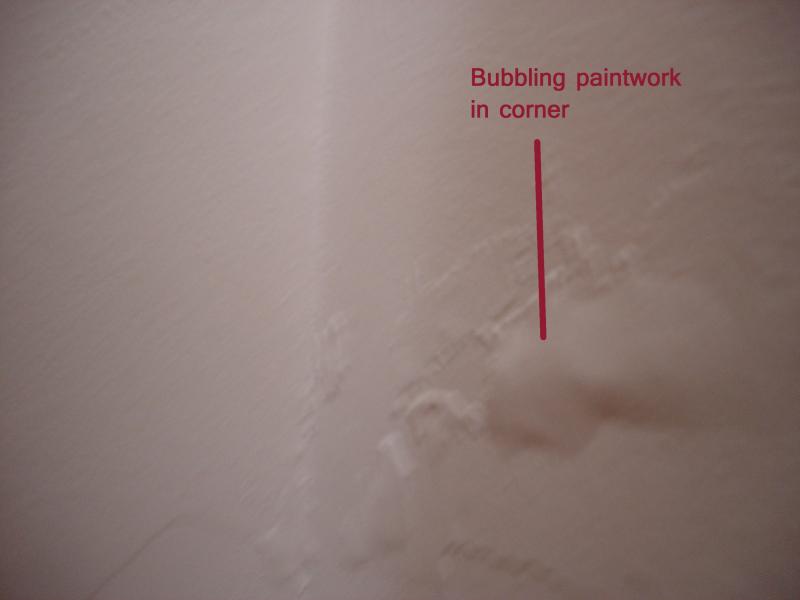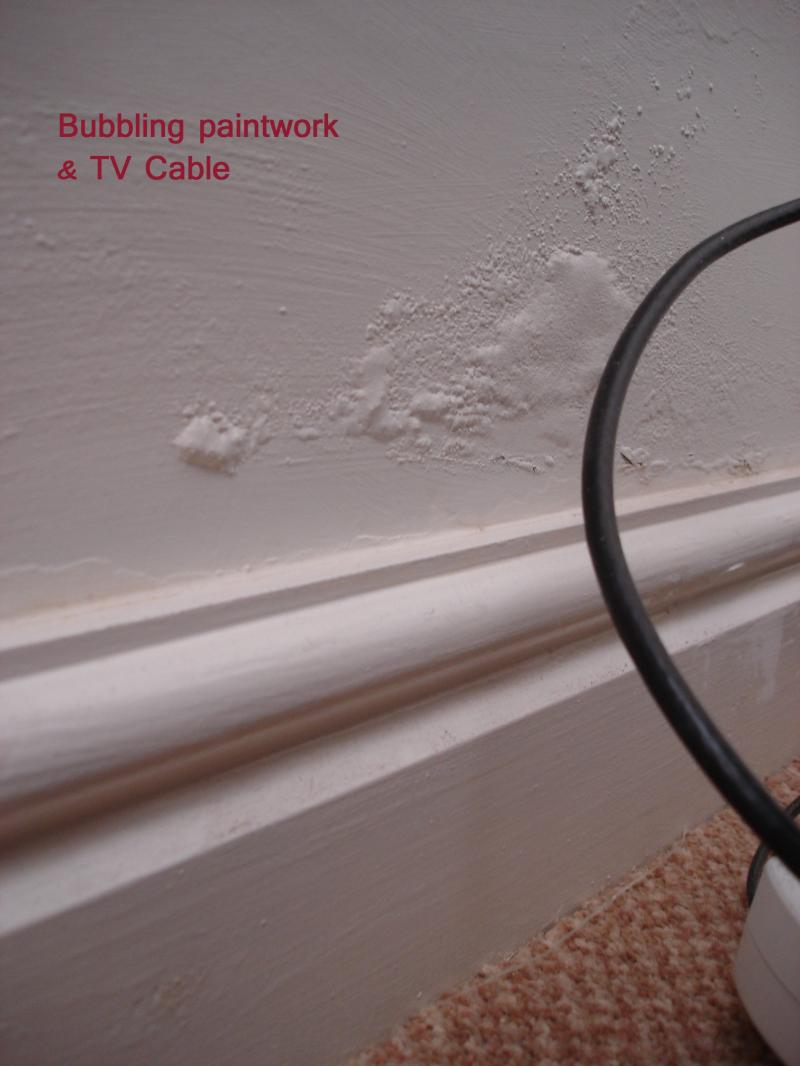I have a problem with bubbling paint work on the ground floor of my house beneath a living room window and to either side underneath the window. The bubbling typically occurs around 6-12 inches above the skirting but also higher up, with clear 'lines' of damp stretching upwards in places. The wall is an outside wall, and I have concrete floors.
The problem does actually extend to a corner where the exterior wall meets an interior partition, and the problem does stretch a few inches along the partition also. On the other side of the partition is the kitchen, but I've not had any major problems showing in there because there are cupboards/tiles on the other side. However, I did notice some low level condensation on the tiles in winter - whether this is related in any way I don't know. I've not seen any signs of condensation on the living-room side of the partition.
I've checked the wall outside and there is no sign of cracking/damage (was rendered a few years ago), there's no sign of potential water ingress around the window itself, and the guttering was replaced in the last 12 months. The problem has been ongoing for just over 2 years and shows up every few months, at which point I strip and re-paint the affected areas. The last time I tried damp sealant paint but (predictably) it didn't really help much.
Cavity wall insulation was installed in 2002 (I moved in in 2006), but I don't know whether this is related. There is an air vent on the outside of the house around the point of the interior partition, but this looks to be free of any blockage.
Photos attached below showing bubbling and areas where bubbling paintwork has been removed. Can anyone help shed some light on what might be causing the problem, before I contact the cavity insulation installers for assistance?
[/img]
The problem does actually extend to a corner where the exterior wall meets an interior partition, and the problem does stretch a few inches along the partition also. On the other side of the partition is the kitchen, but I've not had any major problems showing in there because there are cupboards/tiles on the other side. However, I did notice some low level condensation on the tiles in winter - whether this is related in any way I don't know. I've not seen any signs of condensation on the living-room side of the partition.
I've checked the wall outside and there is no sign of cracking/damage (was rendered a few years ago), there's no sign of potential water ingress around the window itself, and the guttering was replaced in the last 12 months. The problem has been ongoing for just over 2 years and shows up every few months, at which point I strip and re-paint the affected areas. The last time I tried damp sealant paint but (predictably) it didn't really help much.
Cavity wall insulation was installed in 2002 (I moved in in 2006), but I don't know whether this is related. There is an air vent on the outside of the house around the point of the interior partition, but this looks to be free of any blockage.
Photos attached below showing bubbling and areas where bubbling paintwork has been removed. Can anyone help shed some light on what might be causing the problem, before I contact the cavity insulation installers for assistance?
[/img]




